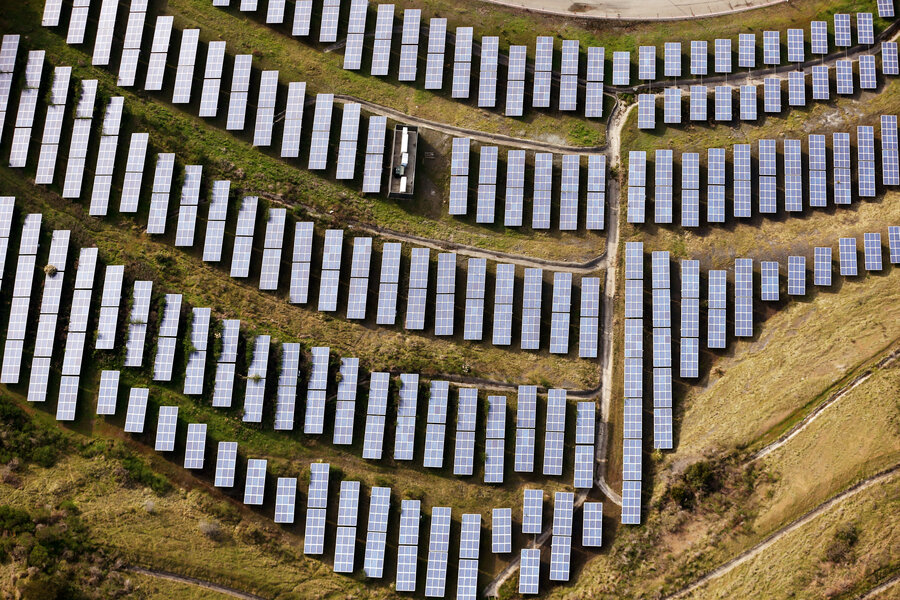Renewable energy at a ‘tipping point’
Loading...
Should the world promote economic growth or fight climate change? That model of “either/or” thinking may be losing its validity faster than even some experts have imagined.
While fossil fuels – coal, oil, gas – still generate roughly 85 percent of the world’s energy supply, it’s clearer than ever that the future belongs to renewable sources such as wind and solar.
The move to renewables is picking up momentum around the world: They now account for more than half of new power sources going on line.
Some growth stems from a commitment by governments and farsighted businesses to fund cleaner energy sources. But increasingly the story is about the plummeting prices of renewables, especially wind and solar. The cost of solar panels has dropped by 80 percent and the cost of wind turbines by close to one-third in the past eight years, reports the International Renewable Energy Agency.
In many parts of the world renewable energy is already a principal energy source. In Scotland, for example, wind turbines provide enough electricity to power 95 percent of homes.
While the rest of the world takes the lead, notably China and Europe, the United States is also seeing a remarkable shift. In March, for the first time, wind and solar power accounted for more than 10 percent of the power generated in the US, reported the US Energy Information Administration.
President Trump has underlined fossil fuels – especially coal – as the path to economic growth. In a recent speech in Iowa, a state he won easily in 2016, he dismissed wind power as an unreliable energy source.
But that message did not play well with many in the Hawkeye State, where wind turbines dot the fields and provide 36 percent of the state’s electricity generation – and where tech giants such as Facebook, Microsoft, and Google are being attracted by the availability of clean energy to power their data centers.
Prominent Republican politicians in Iowa are backing the growing industry. The state’s senior senator, Republican Chuck Grassley, has pledged his strong commitment to wind power, as has the new GOP governor, Kim Reynolds. Other red states in the heartland, such as Kansas, the Dakotas, and Texas, are experiencing a wind-powered boom as well.
The question “what happens when the wind doesn’t blow or the sun doesn’t shine?” has provided a quick put-down for skeptics. But a boost in the storage capacity of batteries, and a dramatic drop in their cost, is making their ability to keep power flowing around the clock more likely.
The advance is driven in part by vehicle manufacturers, who are placing big bets on battery-powered electric vehicles. Although electric cars are still a rarity on roads in 2017, this massive investment could change the picture rapidly in coming years. China, whose cities are choked by air pollution, may lead the way.
“Renewables have reached a tipping point globally,” sums up Simon Virley, who studies the world’s energy markets for the international accounting firm KPMG. He sees renewables competing on price with fossil fuels in more and more places around the world.
“I think [the shift to renewable energy is] happening much faster than most well-educated business people in America understand,” adds British investor Jeremy Grantham, cofounder of the Boston-based asset manager firm GMO, in Britain’s Financial Times recently.
While there’s a long way to go, the trend lines for renewables are spiking. The the pace of change in energy sources appears to be speeding up – perhaps just in time to have a meaningful effect in slowing climate change.
What Washington does – or doesn’t do – to promote alternative energy may mean less and less at a time of a global shift in thought.







